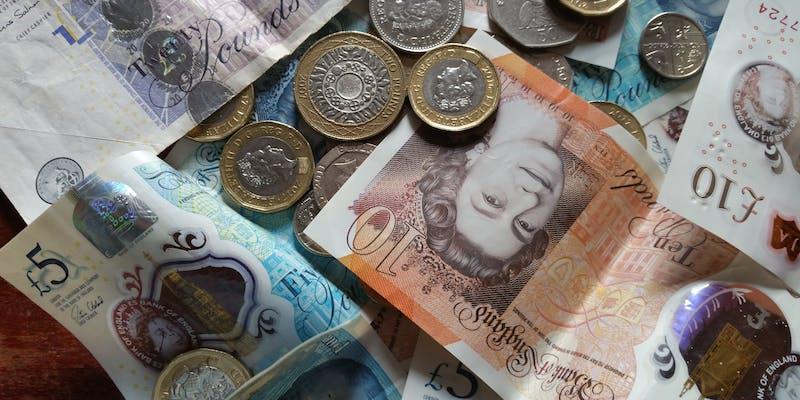Currency Wars: In-Depth Analysis of Tactics and Consequences
Dec 10, 2023 By Susan Kelly
In a currency war, nations competitively devalue their currencies to boost their export attractiveness. Reducing their currency's value makes their goods cheaper and more desirable to foreign buyers. This approach stimulates export-driven growth and bolsters domestic demand by making imported goods pricier, encouraging local alternatives. These strategies can lead to job creation and economic expansion.
However, there are downsides. Countries often depend on imported machinery and equipment for production. If their currency's value drops, these essential imports become too costly. This situation can harm long-term productivity.
Currency wars are generally seen as detrimental to global economic health. The ongoing cycle of competitive devaluation among nations can lead to adverse outcomes like increased trade protectionism and barriers, disrupting global trade dynamics.
Advantages of a Weaker Currency

A stronger currency can lead to a range of positive outcomes. It can make imports cheaper, which improves the living standards of a country's citizens. They get to enjoy a higher buying power when purchasing international products.
A strong currency can also help control inflation, encouraging domestic companies to become more efficient and competitive. This can lead to a healthier economy overall.
Increasing Exports
Exports are more competitive when a country's currency is weaker because foreign buyers pay less. Demand for these exports can boost growth, employment, and GDP. This classic currency war illustration is central to discussions.
Encourage Domestic Spending
A weaker currency makes imports more expensive. This often causes people to prefer domestically produced goods, which boosts domestic demand and spending. Despite its challenges, this shift can boost economic growth.
Improving International Trade Terms:
Increased exports and decreased imports led to improved international trade terms. This means trade surpluses or deficits will increase. These changes are often discussed in currency wars.
Attracting Foreign Investment and Tourism
A weaker currency can make a country more appealing to foreign investors and tourists. Investments in securities or real estate have become cheaper, and traveling and shopping nationwide have become more budget-friendly. This can boost the economy significantly.
Managing Government Debt
Devaluing a currency can make government debt more manageable. It effectively reduces the value of outstanding loans, benefiting borrowers but often at the expense of lenders. This aspect is a crucial point in currency war discussions.
Influencing Inflation
A weaker currency can boost export demand and reduce imports, but it also means a higher cost of living and decreased consumer purchasing power, leading to higher inflation. This aspect of currency manipulation is often a strategic move in the context of currency wars.
Drawbacks of a Currency War
Devaluing a currency can lead to significant consequences, both domestically and internationally. The risk of initiating a currency war is a primary concern. This scenario occurs when one country devalues its currency, prompting other nations to do the same in response. The resulting currency war example can exacerbate tensions between nations as each attempts to gain an economic advantage.
Today, as protectionism increases and globalization faces challenges, more countries are considering using their currencies as a strategic tool. However, currency wars are often seen as self-defeating. They can trigger inflation and increase living costs for citizens, harming the economy rather than helping it.
The effects of currency devaluation are complex. If not managed correctly, it can lead to higher inflation than anticipated, unexpected capital outflows, or a faster currency depreciation than intended. Such volatility can deter investors and businesses who prefer stable economic conditions.
Devaluing a currency boosts exports and decreases imports, which promotes economic growth temporarily but not in the long term. Imported goods and services may cost more, reducing productivity and growth. Importing, outsourcing, and foreign labor costs may slow domestic industry growth.
Examples of Currency Wars
Throughout history, there have been significant currency wars where countries have manipulated their currency values for economic advantage.
These conflicts, often intertwined with broader economic and political dynamics, have profoundly shaped the global financial board. Understanding these currency war example offers valuable insights into the complexities of international finance and economic strategies.
The First Currency War
The initial major currency war emerged in the 1930s, rooted in the aftermath of World War I. Before the war, most major currencies were linked to gold prices under the gold standard.
This system maintained stable foreign exchange rates but limited governmental financial flexibility. To finance the war, countries printed more money, straining the gold standard. Increased money circulation and unchanged gold reserves complicated post-war efforts to return to the gold standard.
Countries like Germany and France devalued their currencies to readjust, while the UK and the US re-adopted the pre-war gold standard rates. The UK's eventual abandonment of the gold standard led to a significant pound depreciation, sparking international responses like capital controls and import tariffs.
During the Great Depression, the gold standard weighed down the US and the world. The 1944 Bretton Woods Agreement established gold-based monetary values. It linked many nations' currencies to the US dollar after President Franklin D. Roosevelt abandoned the gold standard and increased gold reserves.
Second Currency War

The Bretton Woods system stabilized currency values for 20 years. This age ended in 1967 when the UK devalued the pound against the dollar to combat US-like inflation.
After the US abandoned the gold standard in 1973, the IMF established free-floating exchange rates. This move drastically changed the dollar and other currency values.
The Third Currency War
The most recent currency war, a term popularized by Brazil's finance minister, involved significant players like the US, China, and others. It was characterized by nations devaluing their currencies to gain a competitive edge, impacting the currencies of emerging economies like Brazil.
China's efforts to keep the yuan weak against the dollar and Japan's similar tactics exemplified this conflict. Over time, the US's stance on a firm dollar policy evolved, with concerns over other countries, particularly China, maintaining low currency values to benefit from trade surpluses.
Ongoing US-China Tensions
China-US tensions and the currency war example remain a significant concern. The US devalued the dollar under Trump to boost competitiveness. A chronically undervalued yuan is behind the US-China trade war.
These tensions have escalated due to China's unwillingness to stop the yuan from falling further against the dollar, demonstrating that currency devaluation remains an essential part of trade and economic strategies.








